Mastering Detailed Lead Activity Tracking: A Step-by-Step Guide

Effective lead tracking is crucial for businesses aiming to optimize their sales and marketing strategies. By understanding the activity of potential customers from the initial touchpoint to conversion, businesses can make informed decisions to enhance their customer journey.
Through lead tracking, companies can monitor the origin of leads, analyze their behavior, and identify patterns that lead to successful conversions. This process enables businesses to refine their marketing efforts, improve sales alignment, and ultimately drive higher conversion rates and ROI.
Key Takeaways
- Implementing effective lead activity tracking systems to monitor and optimize the customer journey.
- Using detailed lead tracking as a foundation for successful sales and marketing alignment.
- Transforming raw lead data into actionable insights that drive higher conversion rates.
- Identifying bottlenecks in the sales process and understanding customer behavior patterns.
- Creating personalized experiences that accelerate the path to purchase.
Understanding Lead Activity Tracking

Lead activity tracking is a vital process that enables companies to monitor and analyze customer interactions. It involves understanding the activity of potential customers, from the initial touch to the close, and maintaining an organized record of that activity for analysis and marketing optimization.
Through lead tracking, businesses can monitor where leads originated from, including whether they are inbound or outbound leads. Detailed lead activity tracking is essential for creating a comprehensive timeline of each lead’s journey.
What Is Detailed Lead Activity Tracking?
Detailed lead activity tracking is the systematic process of monitoring and recording all interactions between potential customers and your business throughout the sales cycle. This process includes various behavioral data points such as website visits, content downloads, email interactions, and sales conversations.
- Effective lead tracking creates a comprehensive timeline of each lead’s journey, providing sales and marketing teams with context for every interaction.
- The process distinguishes between inbound leads (those who initiate contact with your company) and outbound leads (those your company reaches out to first).
- By implementing detailed lead activity tracking, businesses gain visibility into the complete customer acquisition path, from first touch to final conversion and beyond.
| Lead Tracking Aspect | Description | Benefits |
|---|---|---|
| Monitoring Interactions | Tracking website visits, content downloads, and email interactions | Provides insights into lead behavior and preferences |
| Lead Origin | Identifying whether leads are inbound or outbound | Helps in optimizing marketing strategies |
| Sales Cycle Analysis | Analyzing the sales cycle to understand lead conversion | Enhances sales team efficiency and conversion rates |
Why Detailed Lead Activity Tracking Matters

Businesses that leverage detailed lead activity tracking can significantly enhance their sales strategies. By understanding how leads interact with their brand, businesses can make informed decisions to optimize their sales processes.
The data that lead tracking provides gives marketers more insight into and understanding of how the sales funnel works. This enables them to make pipeline projections, fine-tune marketing campaigns, and quickly abandon strategies that aren’t working to move prospects through the funnel with less friction.
Impact on Sales Conversion Rates
Detailed lead activity tracking has a direct impact on sales conversion rates. By identifying which leads are most likely to convert based on their behavior patterns and engagement levels, sales teams can prioritize high-potential leads.
- Sales teams can allocate resources more efficiently, resulting in higher close rates.
- The insights gained from tracking lead activities enable sales representatives to personalize their approach.
- Understanding which touchpoints lead to conversions helps organizations optimize their sales process.
| Benefits of Lead Tracking | Impact on Sales |
|---|---|
| Prioritization of High-Potential Leads | Increased Conversion Rates |
| Personalized Sales Approach | Improved Customer Engagement |
| Identification of Conversion Bottlenecks | Optimized Sales Process |
Why Detailed Lead Activity Tracking Matters
The real power of marketing lies in understanding the customer journey, which detailed lead activity tracking makes possible. By leveraging this capability, businesses can significantly enhance their marketing return on investment (ROI).
Benefits for Marketing ROI
Detailed lead tracking transforms marketing from a cost center to a revenue driver by providing clear attribution of which campaigns and channels generate the highest quality leads. This enables marketing teams to optimize their budget allocation by identifying initiatives that deliver the strongest ROI.
Marketing teams can refine their approach by analyzing which content and messaging resonates most with high-converting leads. This creates a feedback loop that continuously improves marketing performance, as insights from past campaigns inform and enhance future strategies.
| Marketing Channel | Lead Quality | Conversion Rate |
|---|---|---|
| Social Media | High | 20% |
| Email Campaigns | Medium | 15% |
| Website Content | Low | 5% |
By implementing detailed lead tracking, businesses can make data-driven decisions, enhance their marketing ROI, and ultimately drive revenue growth.
Types of Leads You Should Be Tracking
Understanding the different types of leads is essential for any business looking to enhance its marketing and sales efforts. Leads are potential customers who have shown interest in a company’s products or services, but not all leads are ready for a sales conversation. Effective lead tracking involves identifying and categorizing leads based on their level of engagement and readiness to buy.
Marketing Qualified Leads (MQLs)
Marketing Qualified Leads (MQLs) are individuals who have demonstrated interest in a company’s offerings but are not yet ready for direct sales contact. These leads are typically generated through marketing efforts such as website visits, email campaigns, or webinars.
- Characteristics of MQLs: MQLs represent potential customers who have shown initial interest by engaging with marketing content. This engagement can be through actions like downloading resources, attending webinars, or subscribing to newsletters.
- Tracking MQLs: By monitoring MQLs, marketing teams can assess which content and channels are most effective at generating initial interest among the target audience.
- Nurturing MQLs: Effective MQL tracking involves monitoring engagement patterns to determine when these leads are ready to be handed off to sales teams, ensuring timely and relevant follow-up.
- Alignment between Marketing and Sales: Establishing clear criteria for what constitutes an MQL helps create alignment between marketing and sales teams on lead quality standards.
By focusing on MQLs, businesses can optimize their marketing strategies to better nurture leads and improve conversion rates. It’s crucial for marketing teams to work closely with sales teams to ensure that MQLs are properly nurtured and handed off at the right moment, maximizing the potential for a successful sale.
Types of Leads You Should Be Tracking
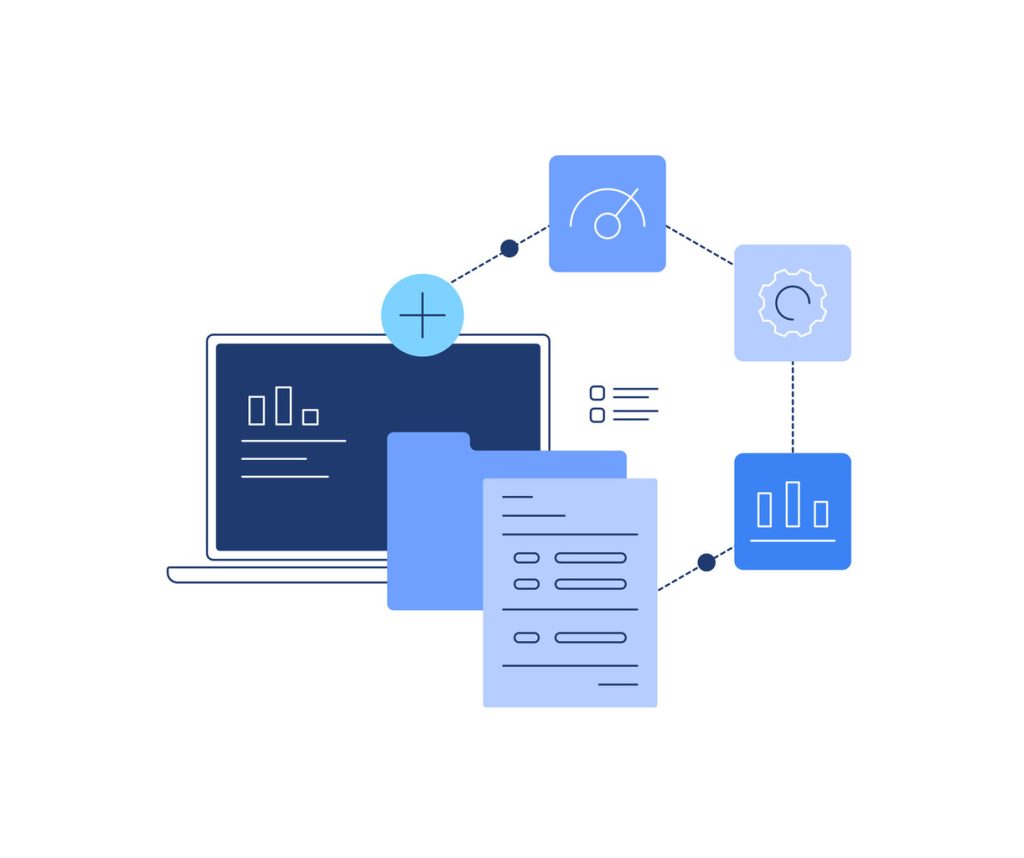
Understanding the different types of leads is vital for sales success. Businesses need to identify and track leads that have the highest potential to convert into paying customers.
Sales Qualified Leads (SQLs)
Sales Qualified Leads (SQLs) are potential customers who have demonstrated clear buying intent through specific high-value actions. They have progressed beyond initial interest and are actively evaluating a solution.
- SQLs are leads that have typically requested product demonstrations, pricing information, or sales consultations.
- Tracking SQLs allows sales teams to focus their efforts on prospects most likely to convert, optimizing time management and improving close rates.
- Effective SQL tracking includes monitoring response times to inquiries, engagement with proposals, and progression through defined sales stages.
- By analyzing the conversion path from MQL to SQL, organizations can identify the most effective qualification criteria and refine their lead scoring models accordingly.
- Lead tracking systems play a crucial role in identifying and managing SQLs, enabling businesses to maximize their sales potential.
By focusing on SQLs, businesses can enhance their sales strategies and improve conversion rates, ultimately driving revenue growth.
Types of Leads You Should Be Tracking

To enhance sales conversion rates, businesses must first comprehend the diverse types of leads they should be tracking. Among these, Product Qualified Leads (PQLs) stand out as particularly significant for companies offering freemium or trial models.
Product Qualified Leads (PQLs)
Product Qualified Leads (PQLs) are users of your free product or trial who exhibit behaviors indicating they’re likely to convert to paying customers. These behaviors might include using specific features heavily, surpassing usage limits of the free plan, or expressing interest in paid features.
The key characteristics of PQLs include:
- Product Usage Behavior: PQLs qualify themselves through their product usage behavior, demonstrating an understanding and appreciation of your solution’s value proposition.
- High-Quality Leads: For SaaS and product-based companies, PQLs often represent the highest-quality leads as they’ve already experienced the product’s benefits firsthand.
- Tracking PQLs: Tracking PQLs involves monitoring specific product engagement metrics such as feature usage frequency, time spent in the application, and interaction with premium features.
- Informing Product Development: Effective PQL tracking enables product teams to identify which features drive conversion, informing both product development and sales conversation strategies.
- Conversion Potential: PQLs are prospects who have experienced value from your product through a free trial, freemium model, or limited version before becoming paying customers.
By focusing on PQLs, businesses can optimize their sales strategies to target leads that are more likely to convert, thereby enhancing overall sales efficiency and customer satisfaction.
Types of Leads You Should Be Tracking

In the realm of sales and marketing, identifying and tracking the right leads can significantly impact business growth. Companies offering ongoing services, such as maintenance, support packages, or consulting, need to pay particular attention to a specific category of leads known as Service Qualified Leads (ServQLs).
Service Qualified Leads (ServQLs)
Service Qualified Leads (ServQLs) are existing customers who have shown interest in additional or expanded service offerings from your business. These leads are crucial for businesses looking to leverage their existing customer base for growth.
ServQLs typically emerge through interactions with customer support, account management teams, or service delivery personnel who identify potential upsell or cross-sell opportunities. Effective tracking of ServQLs allows organizations to capitalize on these opportunities, often resulting in higher conversion rates compared to acquiring entirely new customers.
- Service Qualified Leads are existing customers indicating interest in additional services or expanded offerings.
- These leads emerge through interactions with customer support or account management teams.
- Tracking ServQLs enables businesses to leverage their customer base for growth.
- Effective ServQL tracking includes monitoring customer satisfaction and service utilization rates.
- By identifying and pursuing ServQLs, businesses can increase customer lifetime value.
To maximize the potential of ServQLs, businesses should implement a robust lead tracking system that can monitor customer interactions and identify signals indicating a readiness for additional services. Call tracking software can play a vital role in this process by providing insights into customer inquiries and service-related queries.
By systematically tracking and pursuing ServQLs, companies can not only enhance customer satisfaction but also drive business growth through targeted sales efforts. This approach underscores the importance of integrating lead tracking into overall sales and marketing strategies.
Differentiating Between Leads, Prospects, and Opportunities
In the realm of sales and marketing, understanding the nuances between leads, prospects, and opportunities is crucial for optimizing conversion rates. This distinction is not merely semantic; it has significant implications for how businesses approach potential customers and manage their sales processes.
Leads vs. Prospects: Understanding the Difference
A lead is an individual or organization that has expressed interest in a product or service by providing contact information. However, not all leads are created equal. A prospect, on the other hand, is a lead that has been qualified as a potential customer based on certain criteria such as budget, authority, need, and timeline.
The process of distinguishing between leads and prospects involves evaluating these criteria to determine whether a lead is likely to become a customer. This evaluation is critical because it allows sales teams to focus their efforts on the most promising leads.
- Understanding the distinction between leads and prospects is crucial for effective lead tracking and sales process optimization.
- A lead represents any individual or organization that has shown initial interest in your offerings and provided contact information, but hasn’t been qualified against your business criteria.
- Prospects are leads that have been evaluated and determined to meet specific qualification standards, indicating they’re a good fit for your product or service.
- The transition from lead to prospect typically involves assessing factors such as budget authority, need, timeline, and alignment with your ideal customer profile.
- By clearly differentiating between leads and prospects in your tracking system, sales teams can prioritize their efforts on individuals most likely to become valuable customers.
Effective lead tracking and qualification are essential for maximizing sales efficiency and improving customer relationships. By understanding the differences between leads, prospects, and opportunities, businesses can streamline their sales processes and enhance their overall sales strategy.
Differentiating Between Leads, Prospects, and Opportunities
Understanding the distinctions between leads, prospects, and opportunities is vital for effective sales and marketing strategies. As leads progress through the sales funnel, they are qualified and nurtured until they become sales opportunities.
When a Lead Becomes a Sales Opportunity
A lead becomes a sales opportunity when it has been qualified and demonstrates a clear intent to purchase. This transition is critical as it signifies that the lead is now ready for direct sales engagement.
The process of converting a lead into a sales opportunity involves several key steps. Sales teams must carefully evaluate leads based on predefined criteria to determine their readiness to buy. These criteria often include factors such as budget, decision-making authority, need for the product or service, and timeline for purchase.
- A sales opportunity represents the critical transition point where a qualified prospect enters the active sales pipeline and becomes part of revenue forecasting.
- Opportunities differ from prospects in that they’ve demonstrated specific buying signals and have engaged in meaningful sales conversations about implementing your solution.
- The conversion from prospect to opportunity typically occurs when key criteria are met, such as confirmed budget, decision-making authority, defined timeline, and explicit interest in moving forward.
- Tracking this transition point is essential for accurate sales forecasting, pipeline management, and measuring the effectiveness of your qualification process.
- By establishing clear, objective criteria for when a lead becomes an opportunity, organizations create consistency in their sales tracking and improve the reliability of their revenue projections.
To illustrate this process, consider the following table that outlines the key differences between leads, prospects, and opportunities:
| Category | Description | Key Characteristics |
|---|---|---|
| Lead | A potential customer who has shown some interest in your product or service. | Initial contact, potential interest. |
| Prospect | A lead that has been qualified as having potential to become a customer. | Qualified based on certain criteria, potential fit. |
| Opportunity | A prospect that has demonstrated a clear intent to purchase and is ready for sales engagement. | Clear intent, qualified, ready for purchase. |
As noted by a sales expert,
“The key to successful sales is not just in generating leads, but in identifying and nurturing opportunities that are likely to convert into sales.”
By understanding and effectively managing the transition from lead to sales opportunity, businesses can significantly enhance their sales performance and revenue growth.
Setting Up Your Detailed Lead Activity Tracking System

To maximize the effectiveness of your lead tracking, it’s crucial to define your lead stages and sales funnel clearly. A well-structured lead tracking system is essential for understanding the customer journey and optimizing your sales process.
Defining Lead Stages for Effective Tracking
Creating an effective lead tracking system begins with clearly defining each stage of your sales funnel, from initial awareness through final decision. Your lead stages should reflect your specific business model and sales process, typically including categories such as new lead, marketing qualified, sales qualified, opportunity, and closed (won/lost).
According to industry experts, “A well-defined sales process is critical to the success of any business, as it allows for the accurate measurement of conversion rates between stages and the identification of process bottlenecks.” – Sales Management Expert
- Successful implementation requires collaboration between marketing and sales teams to establish shared definitions and transition criteria for each lead stage.
- Each stage definition should include specific criteria that determine when a lead moves forward or backward in the pipeline, creating consistency in tracking.
- By mapping your lead stages to your sales funnel, you create a framework that allows for accurate measurement of conversion rates between stages and identification of process bottlenecks.
To get the most out of your sales lead tracking system, it’s not enough to just install a tool; you need to integrate it into your workflow with clear processes, accountability, and regular optimization. Clear definitions help with accurate tracking, reporting, and handoffs between teams.
As noted by a leading CRM provider, “The key to successful lead management is having a clear understanding of your sales process and being able to track leads effectively throughout their journey.” This emphasizes the importance of a well-defined lead tracking process in achieving sales success.
Setting Up Your Detailed Lead Activity Tracking System
A well-designed lead scoring model transforms lead tracking into a strategic advantage. By assigning scores to various lead interactions, businesses can prioritize their sales efforts on the most promising prospects.
Establishing Lead Scoring Criteria
Lead scoring is a method that enables marketing and sales teams to prioritize leads based on their potential to convert. It involves assigning a score to each trackable interaction a lead has with your business, such as visiting your website, downloading content, or responding to emails.
Effective lead scoring transforms subjective assessments of lead quality into an objective, data-driven system. This system prioritizes sales efforts based on the conversion potential of leads. By incorporating both demographic and firmographic fit criteria, as well as behavioral engagement signals, businesses can create a comprehensive lead scoring model.
- Assign point values to different actions based on their correlation with eventual purchase decisions, giving higher weight to high-intent activities.
- Ensure your lead scoring system is dynamic, allowing scores to increase with positive engagement and decrease with inactivity or negative signals.
- Regularly analyze which scored behaviors most accurately predict conversions to refine your scoring model continuously.
To implement lead scoring effectively, businesses should start by identifying the actions and behaviors that indicate a lead’s readiness to buy. By doing so, they can create a data-driven lead tracking system that enhances sales efficiency and conversion rates.
Moreover, lead scoring helps in optimizing marketing ROI by focusing efforts on leads that are more likely to convert, thus streamlining the sales process and improving overall business performance.
Essential Tools for Detailed Lead Activity Tracking
To master detailed lead activity tracking, businesses need the right tools. Effective lead tracking is the backbone of any successful sales strategy, enabling businesses to monitor lead interactions, identify potential customers, and personalize their marketing efforts.
Customer Relationship Management (CRM) systems are pivotal in managing and tracking leads throughout the sales funnel. While tools like Microsoft Excel and Google Sheets can be used for tracking leads, they often fall short in providing a comprehensive view of lead interactions, risking valuable leads slipping through the cracks.
CRM Systems for Lead Management

CRM systems serve as the central hub for all lead tracking activities, providing a single source of truth for lead information across the organization. Modern CRM platforms like Salesforce, HubSpot, and Pipedrive offer specialized features for tracking lead interactions, visualizing sales pipelines, and automating follow-up tasks.
- Comprehensive Lead Tracking: CRM systems enable sales teams to record every touchpoint with leads, creating a comprehensive interaction history.
- Enhanced Collaboration: By having all lead information in one place, teams can collaborate more effectively, ensuring that no lead is neglected.
- Personalized Engagement: With visibility into previous interactions, sales teams can engage with leads in a more personalized manner, improving conversion rates.
- Scalability and Customization: When selecting a CRM, businesses should consider factors like ease of use, customization capabilities, and scalability to support their growth.
By leveraging CRM systems, businesses can significantly enhance their lead management capabilities, ultimately driving more sales and improving customer relationships.
Essential Tools for Detailed Lead Activity Tracking
Effective lead tracking involves utilizing the right technology, including specialized software that can streamline workflows and enhance data accuracy. Beyond basic CRM functionality, specialized lead tracking software offers advanced capabilities designed specifically for monitoring lead behavior and engagement across multiple channels.
Advanced Features of Specialized Lead Tracking Software
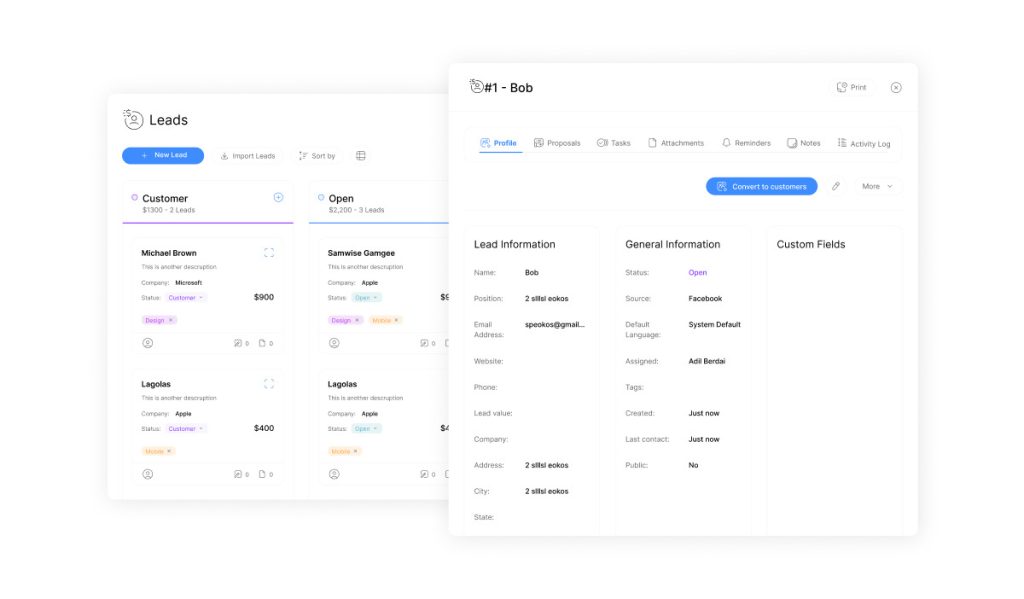
These dedicated platforms provide features such as website visitor identification, behavioral analytics, predictive lead scoring, and multi-touch attribution modeling. Such tools enable businesses to capture lead activities that occur before formal contact is established, revealing intent signals that might otherwise go unnoticed.
- Tools like Usermaven, Leadfeeder, and Clearbit focus on capturing lead activities, providing valuable insights into lead behavior.
- Integration capabilities are essential when selecting specialized tracking software, as these tools must seamlessly connect with your CRM and marketing automation platforms.
- The most effective lead tracking implementations combine the relationship management strengths of CRMs with the behavioral insights and automation capabilities of specialized tracking solutions.
By leveraging these advanced tools and features, businesses can enhance their lead tracking capabilities, ultimately leading to improved sales conversion rates and marketing ROI. The key is to select software that integrates well with existing systems and provides actionable insights into lead behavior.
Implementing Call Tracking in Your Lead Management Strategy
Call tracking software is a vital tool for businesses looking to optimize their marketing campaigns and improve lead tracking. By integrating call tracking into their lead management strategy, companies can gain a deeper understanding of how their marketing efforts are driving phone sales.
How Call Tracking Enhances Lead Data
Call tracking provides marketing attribution data for sales that occur over the phone, allowing businesses to prove the ROI of their marketing efforts and optimize their campaigns to drive more leads. This is particularly valuable for industries where a significant portion of sales happen via phone calls, such as financial services, healthcare, and automotive.
- Call tracking bridges the gap between digital marketing efforts and phone-based conversions, providing attribution data that would otherwise be lost.
- For industries reliant on phone sales, call tracking software reveals which marketing campaigns and keywords are driving high-value phone leads.
- Advanced call tracking solutions capture valuable conversation data, enriching lead profiles with details such as call duration, caller location, conversation topics, and call outcomes.
- This enhanced lead data enables marketing teams to optimize campaign spending toward channels that drive not just website conversions but also high-quality phone inquiries.
- By implementing call tracking, businesses gain a complete view of the customer journey, including both online interactions and offline conversations, creating a more accurate picture of marketing performance.
The benefits of call tracking can be further illustrated by examining its impact on different aspects of lead management:
| Aspect of Lead Management | Impact of Call Tracking |
|---|---|
| Lead Qualification | Call tracking data helps qualify leads by providing insights into caller behavior and conversation topics. |
| Marketing Attribution | Call tracking provides clear attribution data, linking phone sales to specific marketing campaigns and keywords. |
| Campaign Optimization | With call tracking data, businesses can optimize their marketing campaigns to focus on the most effective channels and tactics. |
By leveraging call tracking, businesses can make more informed decisions about their marketing strategies, ultimately driving more sales and improving their overall lead management processes.
Implementing Call Tracking in Your Lead Management Strategy
Integrating call tracking with your CRM can revolutionize your lead management by providing a unified view of each lead’s journey. This integration is crucial for businesses seeking to optimize their sales and marketing efforts.
CRM Integration Benefits
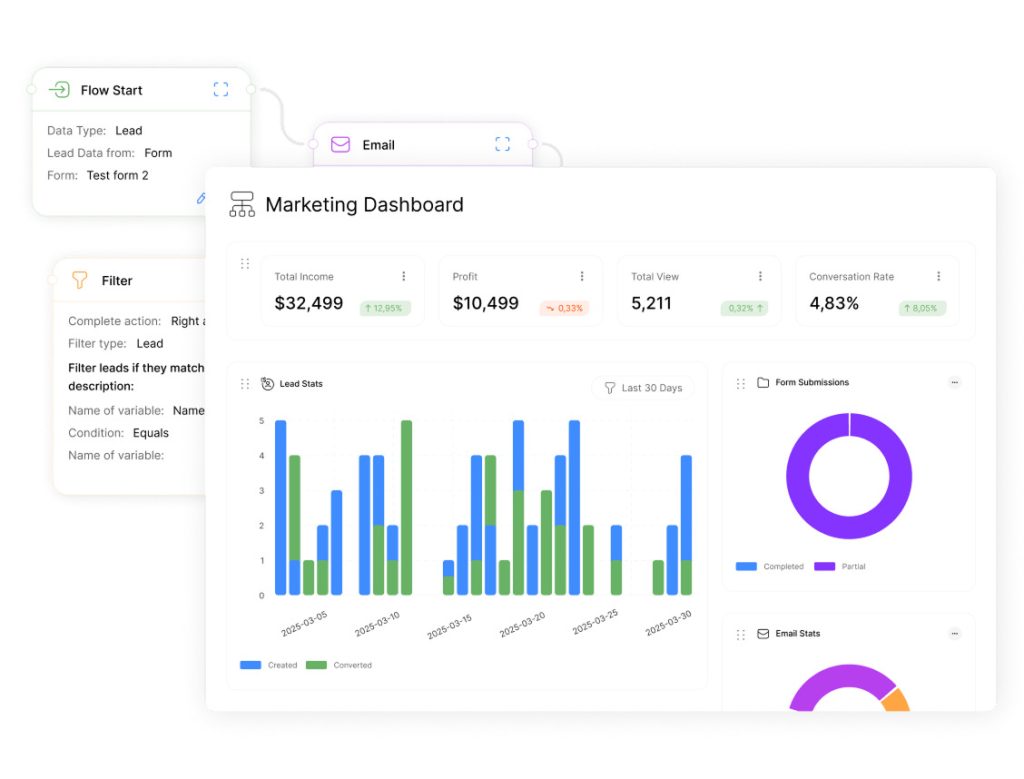
When call tracking data is integrated with your CRM, it creates a comprehensive timeline of each lead’s interactions, from online behavior to phone conversations. This enables sales representatives to access complete context before engaging with a lead, including the marketing campaigns that triggered their call and the topics discussed in previous conversations.
The benefits of this integration are multifaceted:
- Unified Lead View: Integrating call tracking data with your CRM provides a single, unified view of each lead’s journey, connecting online behavior with phone conversations in a single timeline.
- Enhanced Sales Context: Sales representatives can access complete context before engaging with a lead, including which marketing campaigns triggered their call and what topics were discussed in previous conversations.
- Automated Data Synchronization: Automated call data synchronization eliminates manual data entry, ensuring that valuable information from phone interactions is captured in your lead records without requiring additional steps from your team.
- Streamlined Lead Management: When properly integrated, call tracking systems can automatically create new lead records, update lead statuses, and trigger follow-up tasks based on call outcomes.
- Accurate Lead Scoring: The combination of digital engagement data and call interaction insights provides a more accurate basis for lead scoring, helping sales teams prioritize leads that have demonstrated interest through multiple channels.
To achieve this level of integration, it’s essential to select call tracking software that seamlessly integrates with your CRM system. Invoca, for example, integrates with many marketing technology platforms, including DMPs, search platforms, social, video, and display advertising. By ensuring that your call tracking and CRM systems are well-integrated, you can optimize your lead management strategy and improve sales conversion rates.
Effective integration also enables businesses to track leads across all channels, online and offline, efficiently and accurately. This provides relevant and timely data, allowing businesses to optimize their marketing campaigns and tactics. By leveraging the power of integrated call tracking and CRM systems, businesses can make data-driven decisions to drive growth and revenue.
Capturing and Organizing Lead Information
To maximize the potential of lead tracking, businesses must prioritize the standardization of data entry across teams. Inconsistent lead information can disrupt the entire tracking process, leading to missed opportunities and misinformed sales strategies.
Standardizing Data Entry Across Teams
Standardizing data entry processes is essential for maintaining accurate and usable lead records. This involves creating standardized field formats, required information guidelines, and naming conventions that all team members follow. By doing so, businesses can ensure that their CRM or lead tracking system contains clean, structured data.
Key Benefits of Standardization
- Implementing consistent data entry protocols across marketing, sales, and customer service teams.
- Utilizing CRM customization to enforce data consistency through dropdown menus, validation rules, and required fields.
- Providing regular training to ensure all teams understand the importance of data standardization.
- Establishing clear data governance policies to maintain high-quality lead information.
By standardizing data entry, organizations can support reliable reporting, accurate forecasting, and effective lead nurturing. This, in turn, enhances the overall efficiency of the sales process and improves the quality of lead information.
Capturing and Organizing Lead Information
In today’s digital landscape, automating lead capture is no longer a luxury, but a necessity. Businesses have numerous channels through which they can capture leads, including contact form submissions, webinar attendee lists, in-person meetings, and calls to action presented in social channels.
Streamlining Lead Capture Across Multiple Channels
Automating lead capture across multiple channels eliminates manual data entry, reduces human error, and ensures that no potential opportunity goes unrecorded. Effective automation systems can capture leads from various sources, including website forms, email interactions, social media engagement, webinar registrations, and third-party platforms.
- Website Forms: Designing web-to-lead forms to capture essential qualification information while maintaining a low-friction user experience is crucial.
- Email Interactions: Integrating email marketing tools with lead capture systems can provide valuable insights into lead behavior.
- Social Media Engagement: Capturing leads from social media platforms requires integrating social media data with lead management systems.
By implementing progressive profiling techniques, businesses can gradually build comprehensive lead profiles across multiple interactions rather than overwhelming prospects with lengthy initial forms. This approach not only enhances the user experience but also provides a more detailed understanding of lead behavior and preferences.
| Channel | Lead Capture Method | Benefits |
|---|---|---|
| Website | Web-to-lead forms | Captures lead information directly from the website, allowing for immediate follow-up. |
| Email marketing integration | Provides insights into lead behavior through email interactions. | |
| Social Media | Social media engagement tracking | Captures leads from social media platforms, enhancing lead data. |
Integration between marketing automation platforms and CRM systems enables the seamless transfer of lead data, complete with source attribution and engagement history. This integration is vital for maintaining a unified view of lead interactions and ensuring that sales and marketing teams are aligned.
Detailed Lead Activity Tracking in Action
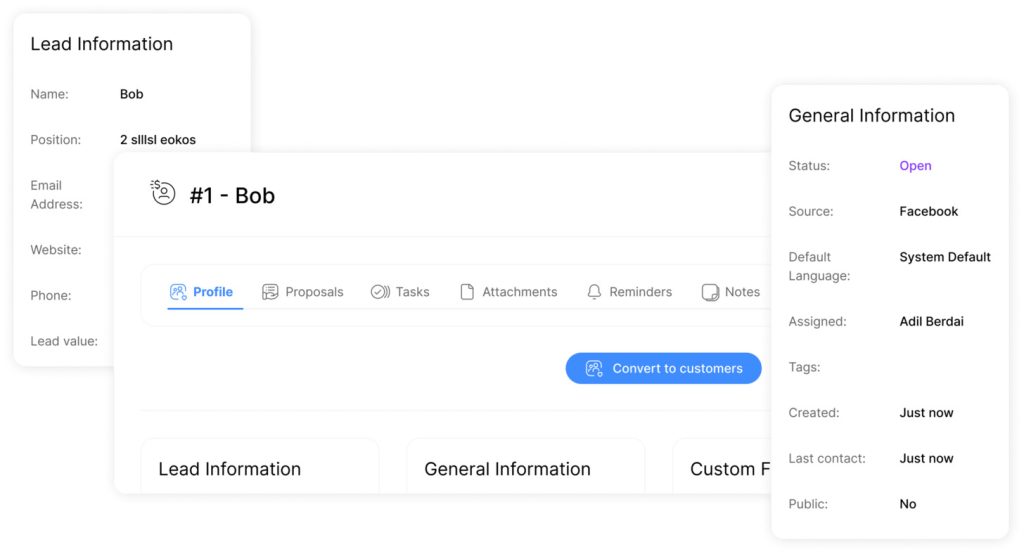
Detailed lead activity tracking allows companies to make data-driven decisions. By leveraging advanced technologies like AI and machine learning, businesses can analyze lead behavior and assign scores based on the likelihood to convert.
Website Behavior and Engagement
Tracking website behavior provides critical insights into lead interests and intent. Advanced tracking capabilities allow monitoring of specific actions such as pages visited, time spent on key content, and engagement with high-value assets like pricing pages or product demonstrations.
- Heat mapping and session recording tools reveal how leads interact with content, highlighting areas of focus and friction.
- Implementing event tracking for specific user actions creates a nuanced understanding of engagement quality beyond simple page views.
- Correlating website behavior patterns with conversion outcomes helps identify digital body language indicating high purchase intent.
By utilizing these advanced lead tracking methods, businesses can optimize their marketing strategies and improve sales conversion rates. For more information on how CRM automation can enhance sales and retention, visit CRM Automation.
Detailed Lead Activity Tracking in Action
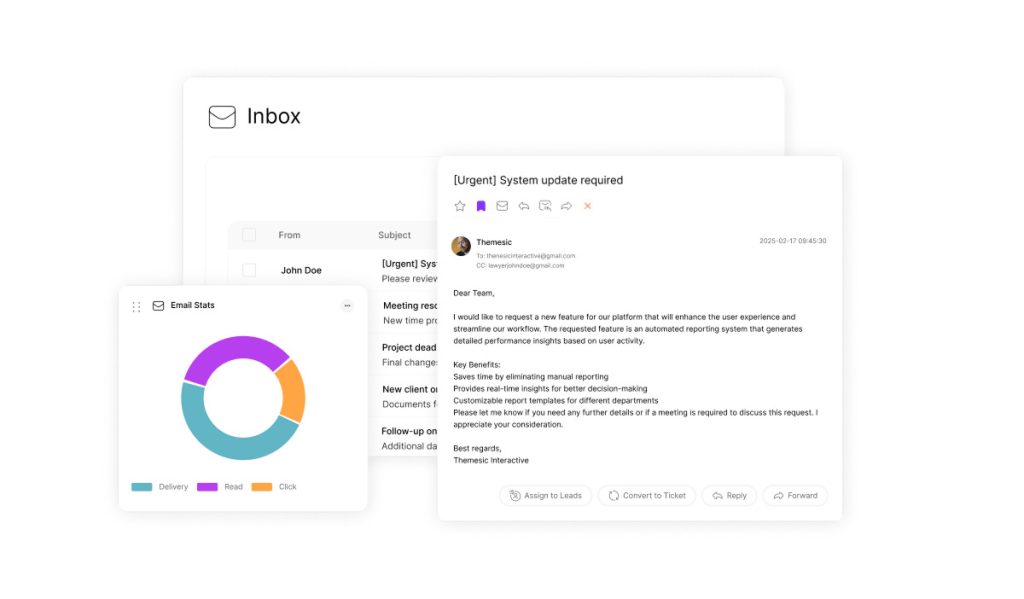
Effective lead tracking involves closely monitoring interactions across various channels, including email and social media. By doing so, businesses can gain a comprehensive understanding of lead behavior and preferences.
Monitoring Email Interactions
Email tracking goes beyond merely monitoring open and click rates. It involves a detailed analysis of reply rates, forward actions, attachment downloads, and time spent reading emails. These metrics provide valuable insights into lead engagement and interest.
- Comprehensive email tracking helps in understanding how leads interact with your content.
- It allows for the refinement of marketing strategies based on lead engagement.
- By analyzing email interactions, businesses can identify highly engaged leads.
Social Media Engagement Analysis
Similarly, social media tracking is crucial for understanding lead behavior on various platforms. This includes monitoring both direct interactions (such as comments, messages, and profile visits) and passive engagement (like content views and video completion rates).
“Social media tracking should capture a complete picture of lead interest by analyzing both direct and passive engagement metrics.”
- Direct interactions on social media provide immediate feedback on lead interest.
- Passive engagement metrics offer insights into lead behavior without direct actions.
- Combining both types of engagement data helps in creating a comprehensive lead profile.
By implementing UTM parameters in all campaign links, marketing teams can accurately attribute lead actions to specific email campaigns and social media initiatives. This enables a more precise measurement of campaign effectiveness and helps in optimizing future marketing efforts.
Cross-channel engagement analysis reveals how leads interact across multiple touchpoints, helping identify which combination of channels and content types most effectively nurtures leads toward conversion. By understanding these interactions, businesses can refine their marketing strategies to better engage leads and drive conversions.
Analyzing Lead Activity Data for Actionable Insights

To maximize the effectiveness of lead tracking, it’s crucial to analyze the data collected and derive actionable insights. This process enables businesses to understand the behavior and preferences of their potential customers, ultimately driving more informed decision-making.
Key Metrics to Track and Measure
Effective lead analysis begins with tracking the right metrics that align with your business objectives and sales process requirements. Some of the core lead tracking metrics include:
- Conversion rates between pipeline stages
- Average time spent in each stage
- Lead source performance
- Lead quality by channel
- Overall pipeline velocity
Beyond basic volume metrics, sophisticated tracking examines qualitative measures such as engagement depth, sales readiness indicators, and buying intent signals. By establishing baseline metrics and tracking trends over time, businesses can accurately assess their performance and identify areas for improvement.
Regular analysis of these key metrics enables sales teams to identify both process bottlenecks and acceleration opportunities, informing strategic adjustments to improve overall conversion efficiency. This data-driven approach ensures that marketing efforts are optimized, and resources are allocated effectively.
Analyzing Lead Activity Data for Actionable Insights
By leveraging detailed lead activity tracking, businesses can make informed decisions that drive conversion success. Lead tracking brings real data to the table, enabling companies to see which demographics are most interested in their product, what content resonates best, and how long it typically takes for a lead to convert into a customer.
Turning Data into Strategic Decisions
Transforming lead tracking data into strategic decisions requires a comprehensive analysis that identifies patterns, correlations, and causal relationships. Effective data analysis combines quantitative metrics with qualitative insights from sales conversations to create a complete picture of what drives conversion success.
To achieve this, businesses should establish decision-making frameworks that connect lead tracking insights directly to actionable strategies. For instance, reallocating marketing budget to high-performing channels or adjusting qualification criteria based on conversion patterns can significantly enhance campaign effectiveness.
Key Strategies for Data-Driven Decision Making:
- Regular data review sessions to ensure insights are translated into coordinated action across the organization.
- Establishing a continuous improvement cycle based on lead tracking data to refine strategies and optimize resource allocation.
- Using data to inform marketing and sales strategies, improving conversion performance over time.
| Strategy | Description | Expected Outcome |
|---|---|---|
| Reallocate Marketing Budget | Shift budget to high-performing channels based on lead tracking data. | Improved ROI on marketing campaigns. |
| Adjust Qualification Criteria | Modify lead qualification criteria based on conversion patterns. | Higher quality leads and increased conversion rates. |
| Regular Data Review Sessions | Conduct regular sessions to review lead tracking data and adjust strategies accordingly. | Coordinated action across marketing, sales, and product teams. |
By adopting these strategies, businesses can ensure that their lead tracking data is translated into actionable insights, driving improved sales and marketing performance.
Aligning Sales and Marketing Through Lead Tracking
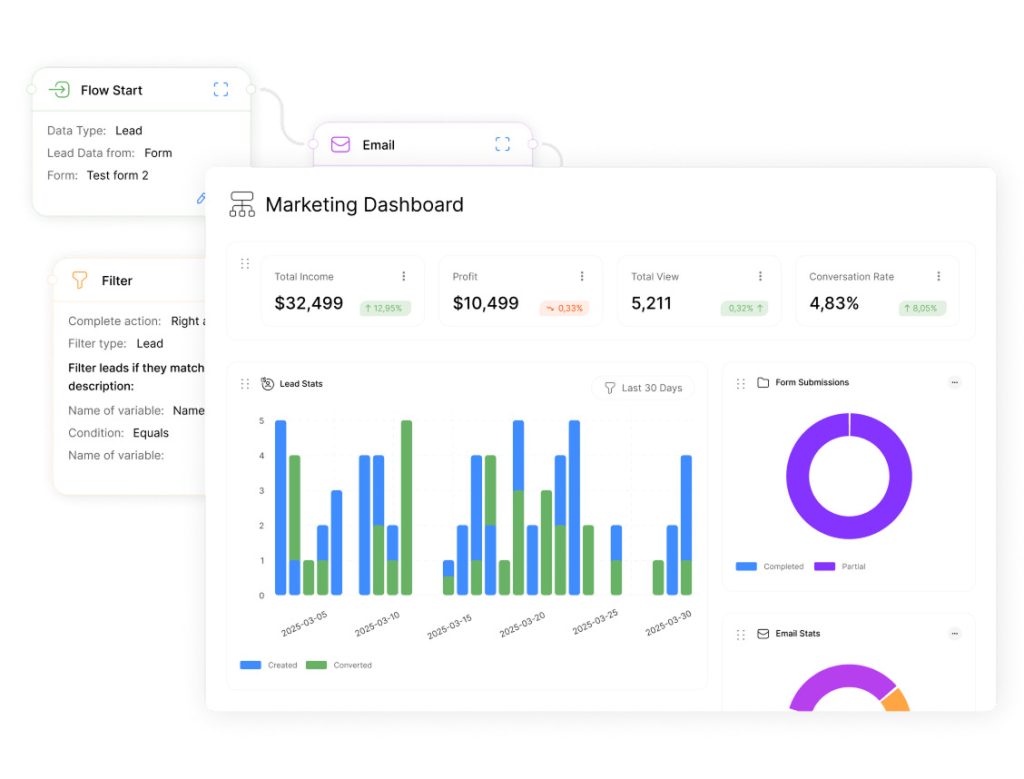
The success of lead tracking hinges on the alignment between sales and marketing teams. For lead tracking to be effective, these teams need to work closely together on both lead tracking and prospect tracking. Seamless collaboration can help uncover more qualified leads, providing an opportunity to create a more customized, personalized sales and marketing approach.
Creating Shared Definitions and Goals
Successful lead tracking requires alignment between sales and marketing teams through shared definitions, common language, and unified goals. To achieve this, several key strategies can be implemented.
To start, creating a service level agreement (SLA) that clearly defines what constitutes a qualified lead ensures both teams operate with the same understanding of lead quality. This SLA should outline the responsibilities of both sales and marketing teams in the lead tracking process.
Establishing shared success metrics that connect marketing activities to sales outcomes creates mutual accountability and reduces departmental silos. This can include metrics such as conversion rates, lead velocity, and customer acquisition costs.
Some key practices that facilitate alignment include:
- Regular cross-functional meetings to review lead performance data, fostering collaborative problem-solving and continuous improvement of the lead management process.
- Both teams contributing to defining lead stages and scoring criteria, developing shared ownership of the entire revenue generation process.
| Metric | Aligned Teams | Non-Aligned Teams |
|---|---|---|
| Lead Conversion Rate | 25% | 15% |
| Sales Cycle Length | 60 days | 90 days |
| Customer Acquisition Cost | $500 | $700 |
By implementing these strategies, businesses can ensure that their sales and marketing teams are working towards the same goals, ultimately enhancing the effectiveness of their lead tracking efforts.
Aligning Sales and Marketing Through Lead Tracking
By leveraging detailed lead activity tracking, organizations can significantly enhance the alignment between their sales and marketing departments. This alignment is crucial for ensuring that leads are properly nurtured and handed off between teams, ultimately driving higher conversion rates.
Establishing Clear Handoff Processes
Clear handoff processes between marketing and sales teams are vital for eliminating confusion about lead ownership and ensuring timely follow-up on qualified opportunities. Effective handoff protocols include specific trigger criteria that initiate the transfer, standardized information packages that provide sales with complete context, and feedback mechanisms to evaluate lead quality.
The process of lead tracking also allows marketers to gauge how close a lead is to making a purchase, which helps in making timely decisions that transform that lead into a viable prospect and hopefully, a customer. Automation plays a key role in streamlining handoffs by triggering notifications, assigning tasks, and ensuring all relevant information moves with the lead from marketing to sales systems.
- Establishing service level agreements (SLAs) for response times creates accountability and ensures that leads receive prompt attention when they show high purchase intent.
- Regular review of handoff effectiveness metrics helps identify and address any friction points in the process, continuously improving the transition experience for both internal teams and potential customers.
To further enhance the handoff process, businesses should consider implementing a robust lead tracking system that can provide real-time data on lead activity. This enables both sales and marketing teams to stay informed and make data-driven decisions. By doing so, companies can prevent missed handoffs between marketing and sales and other key functions, like customer success, thereby avoiding lost opportunities.
Common Lead Tracking Mistakes to Avoid
The success of lead tracking efforts hinges on the simplicity and usability of the tracking system. Businesses often undermine their lead tracking by implementing overly complex systems that teams find difficult to use consistently.
Simplifying Qualification Criteria
Overcomplicating qualification criteria can lead to inconsistent application and poor lead tracking outcomes. Simplifying qualification criteria is essential for effective lead tracking.
Signs of an overcomplicated tracking system include:
- Excessive mandatory fields in lead tracking forms can lead to user frustration and poor data quality.
- Too many lead stages can complicate the sales process and make it difficult to track leads effectively.
- Overly granular scoring models can be challenging to manage and may not provide actionable insights.
- Convoluted workflows can create administrative burdens and reduce team adoption rates.
The most effective lead tracking systems strike a balance between comprehensiveness and usability. By focusing on essential data points that inform decision-making or predict conversion likelihood, businesses can eliminate unnecessary administrative burdens.
As emphasized by industry experts,
“A simple, intuitive lead tracking system is crucial for maximizing sales conversion rates and improving team productivity.”
In conclusion, simplicity is key to effective lead tracking. By avoiding overly complex systems and focusing on simplicity, businesses can improve team adoption, data quality, and ultimately, sales conversion rates.
Common Lead Tracking Mistakes to Avoid
One of the most significant challenges in lead tracking is maintaining accurate and up-to-date data. Businesses often overlook the importance of regular data maintenance, leading to a decline in lead tracking effectiveness.
Data Maintenance Neglect
Neglecting regular data maintenance can have severe consequences on lead tracking. Data decay is a significant threat, with contact information and company details becoming outdated at rates of up to 30% annually. This can lead to wasted outreach efforts, inaccurate reporting, and missed opportunities when attempting to re-engage previously interested leads.
To avoid these issues, businesses should implement effective data hygiene practices. This includes:
- Regular duplicate detection and merging to prevent data redundancy.
- Automated verification of contact information to ensure accuracy.
- Systematic cleansing of inactive records to maintain a healthy database.
- Implementing data enrichment processes that automatically update and expand lead profiles with current information.
Establishing a regular cadence for database review and cleanup is crucial. For most businesses, a quarterly review is recommended to ensure that sales teams work with accurate information and prevent the accumulation of low-quality data.
By prioritizing data maintenance, businesses can significantly improve their lead tracking capabilities, leading to more effective sales strategies and better customer relationships.
Advanced Lead Tracking Strategies

Advanced lead tracking now leverages AI to predict lead conversion with unprecedented accuracy. This marks a significant shift in how businesses approach sales and marketing, enabling them to focus on the most promising leads.
Predictive Lead Scoring with AI
Predictive lead scoring represents a substantial evolution in lead tracking, utilizing artificial intelligence (AI) and machine learning to analyze lead behavior and assign scores based on the likelihood to convert. Unlike traditional scoring models that rely on predetermined rules, AI-powered systems can analyze thousands of data points to identify patterns that may elude human observers.
The key benefits of predictive lead scoring include:
- Enhanced Accuracy: By analyzing a vast array of data points, AI systems can more accurately predict lead conversion likelihood.
- Continuous Improvement: These systems learn and improve over time as they process more data, adjusting their algorithms to reflect changing market conditions and buyer behaviors.
- Dynamic Scoring: Implementation involves feeding historical lead and customer data into the AI system, which then identifies the most predictive factors and creates a dynamic scoring model.
For businesses with a substantial volume of data, predictive scoring can dramatically enhance lead prioritization accuracy. This allows sales teams to concentrate on opportunities with the highest probability of closing, thereby optimizing resource allocation and potentially increasing sales conversion rates.
The integration of AI in lead tracking not only streamlines the sales process but also provides valuable insights into customer behavior and preferences. By leveraging these insights, businesses can tailor their marketing strategies more effectively, improving overall campaign performance and ROI.
Advanced Lead Tracking Strategies
To maximize the effectiveness of lead tracking, businesses must adopt advanced strategies that provide a comprehensive understanding of the customer’s journey. Understanding all the touchpoints in a consumer’s journey is vital in making more informed business decisions and marketing campaigns backed by data.
Multi-touch Attribution Models
Multi-touch attribution models provide a sophisticated approach to understanding how different marketing touchpoints contribute to lead generation and conversion throughout the customer journey. Unlike simplistic first-touch or last-touch models, multi-touch attribution distributes credit across all interactions that influenced a lead’s decision-making process.
There are several common attribution models that businesses can leverage:
- Linear Attribution: Equal credit is given to all touchpoints, acknowledging that each interaction played a role in the conversion process.
- Time-decay Attribution: More credit is assigned to recent interactions, recognizing that the most recent touchpoints often have the greatest influence.
- Position-based Attribution: Emphasis is placed on the first and last touchpoints, as these are often considered critical in initiating and closing a sale.
- Algorithmic Attribution: A data-driven approach that weights touchpoints based on their actual impact on the conversion process.
Implementing multi-touch attribution requires comprehensive tracking across all channels and touchpoints, including both online and offline interactions. By accurately attributing conversion influence across channels, businesses can optimize marketing budget allocation, refine campaign strategies, and create more effective customer journey maps that reflect actual buying behavior.
As Forbes notes, “The future of marketing attribution lies in its ability to accurately measure the impact of every touchpoint across the customer journey.” This underscores the importance of adopting advanced attribution models that can provide a nuanced understanding of how different marketing efforts contribute to lead generation and conversion.
Conclusion: Maximizing Your Lead Tracking Effectiveness
The key to successful lead tracking lies in its ability to connect marketing activities to revenue generation through clear visibility into the customer journey.
Effective lead tracking is not a one-time implementation but an ongoing process of refinement and optimization based on evolving business needs and market conditions. To achieve this, businesses must focus on three key areas: data quality enhancement, process efficiency optimization, and insight generation capabilities.
By continually improving their lead tracking systems, businesses can create a competitive advantage through deeper customer understanding, more efficient resource allocation, and the ability to adapt strategies based on real-time performance insights.
Regular training and reinforcement are crucial to ensure that sales and marketing teams maintain consistent tracking practices and fully leverage the insights available from their system.
To maximize lead tracking effectiveness, businesses should:
- Continuously refine their lead tracking processes to adapt to changing market conditions.
- Focus on enhancing data quality and optimizing process efficiency.
- Leverage insights from their lead tracking system to inform sales and marketing strategies.
By committing to excellence in lead tracking, businesses can drive revenue growth, improve customer satisfaction, and maintain a competitive edge in the market.

